What Is Near-Infrared Light Therapy and How Does It Differ From Regular Red Light?
If you've heard about light therapy's health benefits, you might be asking what makes near-infrared light therapy unique. This treatment employs precise light wavelengths to assist your body in healing and functioning more effectively.
The Light Spectrum Explained Simply
Light has multiple wavelengths, measured in nanometers. Near-infrared light has wavelengths ranging from 810 to 980 nanometers, whereas red light has shorter wavelengths of 600 to 700 nm. The difference in wavelength is what makes near-infrared light more beneficial for deep healing.
Why Can't You See Near-infrared Light?
Near-infrared light exists just beyond what your eyes can see, rendering it completely invisible. You may feel slight warmth during therapy, but unlike red light devices, which glow, near-infrared light acts without apparent evidence.
The Key Difference: Depth of penetration
Infrared wavelength therapy can penetrate your body considerably deeper than standard red light. While red light therapy is effective for surface-level skin issues, near-infrared light can penetrate several centimeters deep into your body, reaching:
- Muscle tissue and joints
- Nerve pathways, blood vessels
- Brain tissue (through the skull)
- Deeper connective tissue layers.
How Does Photobiomodulation Work?
The therapeutic method is known as photobiomodulation, which involves using light to improve cell activity. When near-infrared light enters your tissues, it is absorbed by mitochondria (the sections of cells that produce energy), resulting in increased energy output, reduced inflammation, and improved healing.
Why Wavelength Matters for Your Health
The 810-980 nm wavelength range is compatible with your body's biological system. Instead of addressing surface symptoms, this tailored method directs therapeutic energy to deeper tissues, where many health issues begin.
Unlike heating devices that warm your skin from the outside, near-infrared light therapy energizes cells from within, making it beneficial for treating health issues that standard red light cannot reach.

Faster Muscle Recovery and Less Post-Workout Pain
Near-Infrared Light Therapy Benefits extend far beyond what most people realize, especially for athletes and fitness enthusiasts. Applied to skeletal muscle before resistance exercise, NIR red light therapy effectively reduces strength loss and may be a beneficial, noninvasive way to improve muscle function during rehabilitation after injuries.
Muscle recovery therapy works by targeting the cellular powerhouses called mitochondria. A 2016 study compared the effects of red light therapy and cryotherapy as standalone treatments on muscle recovery, finding that light therapy has an optimal effect on muscle recovery and reduces DOMS and creatine kinase activity.
The science behind infrared pain relief is compelling. Studies have shown that light therapy can reduce the time needed for muscle repair and decrease soreness. Light therapy enhances blood flow to the muscles, ensuring a better supply of oxygen and nutrients. Improved circulation helps in the removal of metabolic waste products like lactic acid, which can cause muscle fatigue and soreness.
This makes near-infrared therapy invaluable for anyone looking to bounce back faster from workouts, reduce delayed onset muscle soreness, and maintain peak performance levels naturally.
Better Blood Flow and Heart Health
Near-infrared light therapy creates remarkable changes in your cardiovascular system through natural biological processes. Red and near-infrared light directly stimulate nitric oxide production in blood vessels. Nitric oxide acts as a messenger molecule that sends relaxation instructions to muscles, facilitating blood flow by producing molecules small enough to cross cell membranes readily.
Infrared circulation therapy works by promoting vasodilation - the widening of blood vessels. The wavelengths of near-infrared light penetrate deep into tissues, promoting vasodilation and enhancing blood flow. Improved circulation can aid in tissue repair, reduce inflammation, and alleviate pain.
The near-infrared cardiovascular benefits extend to improved oxygen delivery throughout your body. Light therapy uses specific wavelengths to stimulate cellular processes that trigger various physiological responses promoting better blood circulation, including vasodilation, formation of new blood vessels, and enhanced oxygenation.
This improved blood circulation helps your entire cardiovascular system function more efficiently, potentially supporting heart health and reducing blood pressure naturally.
Faster Healing for Cuts and Injuries
Near-infrared wound healing represents one of the most well-documented applications of light therapy. Near-infrared wavelengths in the 800–850 nm range have been found to be the most effective and widely studied for promoting beneficial effects on impaired wound healing.
The healing process accelerates through multiple mechanisms. Research shows that light therapy at adequate parameters can promote changes in cellular metabolism leading to increased proliferation of fibroblasts, faster formation of granulation tissue, promotion of collagen synthesis, new blood vessel formation, and earlier skin repair.
Tissue repair therapy works at the cellular level to rebuild damaged areas. Collagen is a protein that plays a critical role in wound healing, providing structure and strength to new tissue. Infrared therapy has been shown to increase collagen synthesis, which helps rebuild tissue more effectively.
Infrared regenerative medicine applications show that light therapy can induce fibroblast proliferation and collagen synthesis, aiding the healing stage. The therapy can significantly increase the synthesis of fibroblast growth factor, which contributes to the formation of new blood vessels and tissue repair.
This makes near-infrared therapy valuable for faster healing of cuts, injuries, and surgical sites.
Natural Pain Relief and Reduced Inflammation
Chronic pain affects millions of people, but near-infrared light therapy offers a natural solution. Pain relief with infrared light has been demonstrated for arthritis of the knee, with other beneficial effects including increased wound healing, blood flow, endorphin levels, and activation of natural pain-relieving chemicals.
Pain relief occurs through multiple pathways. When the body absorbs infrared light, it stimulates the production of endorphins, the natural painkillers produced by our bodies. These endorphins can help reduce pain and discomfort from a variety of conditions, including arthritis, muscle strains, and joint pain.
The anti-inflammatory effects are equally impressive. Experts explain that wavelengths of natural red and near infrared light act as a very mild form of stress that activates protective mechanisms in cells. When red light hits the skin, it nudges mitochondria to make energy more efficiently and boost production of healing anti-inflammatories and disease-fighting antioxidants.

Better Sleep Quality and Natural Circadian Balance
Near-infrared light treatment may make it easier to get better sleep than you believe. Unlike the bright blue light from your phone, which keeps you awake, red and near-infrared light actually help your body manufacture more melatonin, the natural sleep hormone. According to research, those who utilized red light therapy for just 30 minutes per evening had higher sleep quality and felt more rested the next day.
Your body has an internal clock that tells you when to be awake and when to be tired. Modern life, with its late evenings, screen time, and artificial illumination, can disrupt this natural pattern. Near-infrared therapy resets your internal clock by working with your brain's natural processes rather than against them.
What is the best part? You can utilize red light therapy in the evening without worrying about it keeping you awake. In fact, it accomplishes the opposite: it tells your brain that it's time to begin slowing down for the night. Athletes who utilized this therapy for two weeks slept better and performed better during the day, demonstrating the link between excellent sleep and daily vitality.
How Can You Use Near-Infrared Light Therapy Safely and Effectively?
The good news about near-infrared light treatment is that it's quite safe when done correctly. You will not experience the severe adverse effects associated with many drugs or intrusive therapies. However, like with any health tool, there are some easy instructions to follow to ensure the greatest and safest results.
- Start slowly and gradually: Begin with 3-5 sessions each week, treating each area for 1-10 minutes with the light. Your body needs time to acclimate, so don't start with hour-long sessions right away. After a few weeks, you can go to daily use of up to 20 minutes per location if necessary.
- Determine the appropriate distance for your goals: For overall health, keep your device approximately 6 inches away and use it.
- Maintain Consistency and Hydration: Regular use leads to longer-lasting benefits. Maintain hydration throughout your sessions, and remember that consistency is where the true magic happens.
- Protect your eyes throughout treatment: Never gaze directly at the light source, and if you're treating regions near your face, consider using protective eyewear. While near-infrared light is generally harmless, maintaining your vision should always be a top consideration.
- Consult your healthcare provider as needed: If you have any health concerns, take medications that cause light sensitivity, or have sensitive skin, consult your doctor first. They can advise you on the best method for your specific scenario and ensure that it does not interfere with any other health-related activities.
Try Near-Infrared Light Therapy for Better Health
Consider how fantastic near-infrared light treatment is. Simply exposing your body to precise wavelengths of light improves muscular recovery, circulation, healing, natural pain relief, and sleep. What is the best part? It works with your body rather than against it, and you will not experience the adverse effects associated with drugs or invasive treatments. Whether you're an athlete wanting to recover faster or simply want to feel better every day, this natural method delivers tangible results.



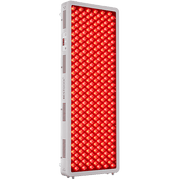









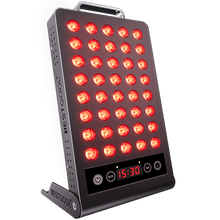
 Small
Small
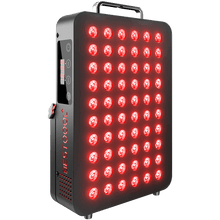
 Moderate
Moderate
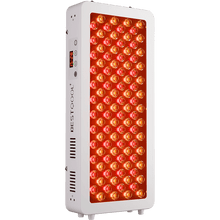
 Moderate
Moderate
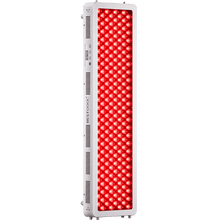
 Moderate
Moderate
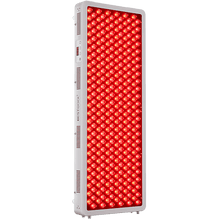
 Full
Full



